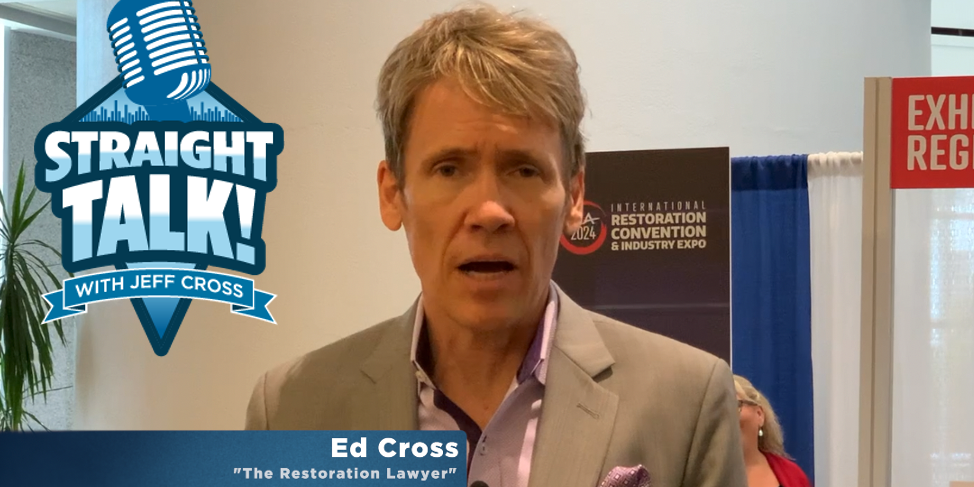Innovative Technologies in Fire Restoration

Cleaning and restoring a building after a fire is challenging work. Any property owner or occupant who has experienced such an event knows that the process involves much more than mere rebuilding. Indeed, one of the most challenging aspects of fire restoration is often not the carpentry work, but rather the cleaning and odor removal.
Fires can scar buildings in many ways, not the least of which are smoke stains, soot stains, and an overpowering odor. Fire scars can be stubborn. But, fortunately, new innovative technologies in the fire restoration field make them more manageable—and less permanent. Here are eight technologies and techniques that every cleaning and restoration professional should be aware of.
Ozone generators
When the smell of smoke lingers in a property, increasing numbers of cleaning and restoration professionals are turning to ozone generators. These compact, portable machines—sometimes just the size of a small space heater—use the process of oxidation to remove odors.
First, they generate a highly reactive molecule known as ozone. Once released, the ozone molecules interact with the other molecules causing the odor, breaking them down and removing the smell. Small ozone generators can cost a couple of hundred dollars, and commercial generators a few thousand. Ozone generators can also be used to remove the smell of cigarette smoke, sewage, and mold.
Hydroxyl generators
Hydroxyl generators operate on the same principle as ozone generators but use different chemistry. These tools, roughly the same shape and size as ozone generators, create hydroxyl molecules within indoor spaces.
Hydroxyl molecules, similar to ozone molecules, are highly reactive. They purify the air by breaking down the molecular structure of odors and volatile organic compounds. Ultraviolet (UV) light shines onto surfaces, interacting with an applied compound of titanium dioxide, which is a photocatalyst. The resulting chemical reaction breaks down substances like soot, smoke stains, and odors. Photocatalytic oxidation is often used to complement other techniques, rather than as the sole approach.
Hydroxyl generators, which use the same broad range of UV radiation as the sun, can be used to remove the smell of fire and smoke in many environments, from homes to hospitals to offices. They have the added benefit of improving air quality, too.
Enzyme-based cleaners
Enzyme-based cleaning agents utilize clever chemistry to make fire cleanup even more effective. Enzyme-based cleaning products excel at breaking down the protein residues that result from fires, such as soot and smoke stains. They digest such stains (something ordinary cleaners can’t do) and leave surfaces looking new. This breaking down of the residue can also remove its smoky odor. Further, these cleaners are safer and less likely to damage the original surface than harsher alternative cleaners.
Dry ice blasting
Dry ice blasting is a process that utilizes solid carbon dioxide—better known as dry ice pellets—to blast away fire damage. The pellets are fired at a surface using compressed air, hitting the target at high speed. When the pellets contact the surface, they immediately turn from a solid into a gas—a transformation that releases energy and scours away soot and smoke stains.
Although the process sounds harsh, the dry ice pellets won’t damage the original surface being cleaned and restored. Dry ice blasting has additional benefits, like its versatility (it can be used on wood, concrete, and metal) and its eco-friendly nature (it requires no dangerous chemicals and doesn’t create waste).
Laser cleaning technology
Laser cleaning technology can remove blemishes, patinas, and other imperfections from materials, including smoke and soot stains, leaving them looking brand new. First, precise laser beams are shot at the damaged surface. The contaminants on the surface then absorb the laser beams and either fall free or transform into gas. This laser-based approach is much safer and cleaner than older technologies, like sandblasting, which can be loud, hazardous, and incredibly messy.
HEPA filter systems
HEPA, an acronym well known among veteran cleaning and restoration professionals, stands for high-efficiency particulate air. HEPA filter systems purify indoor air by removing unwanted particles, toxins, and microorganisms. A system earns a HEPA badge if it can successfully capture more than 99% of particles that are 0.3 micrometers in size.
They’re often used in spaces such as hospitals and industrial centers but are also helpful in fire cleanup and restoration. HEPA systems can combat odors and remove the dangerous particles that linger in the aftermath of a fire. These systems are also flexible—they can be deployed as a single unit, similar to ozone and hydroxyl generators, or as units integrated into existing HVAC systems.
Ultrasonic cleaning technology
Ultrasonic cleaning technology uses another unlikely source in the name of cleaning and restoration: sound. It is best applied to damaged items rather than damaged surfaces. Ultrasonic cleaning techniques begin by placing damaged items in a tank of cleaning solution, such as a detergent. From there, devices within the tank fire out ultrasonic waves, which create bubbles that, in turn, generate shockwaves. The force of these shockwaves can blast smoke and soot damage off very delicate items, such as clothing, electronics, and jewelry.
Nanotechnology cleaners
Nanotechnology cleaners use incredibly small technology to restore fire-damaged materials and mitigate odors. Nanotechnology cleaners leverage minuscule, nano-scale particles that can penetrate almost any material, thus effectively removing stubborn stains and odors. Like the other techniques on this list, this cleaner can break down residues left by fire, effectively removing its imprint.
Restoring a property after a blaze and removing all traces of the fire can be an enormously challenging undertaking, even for experienced cleaning and restoration professionals. However, a new slate of technologies and techniques is making the process more efficient and effective. By deploying and mastering these innovative approaches, cleaning and restoration professionals can help make even seriously fire-scarred properties look new again.











